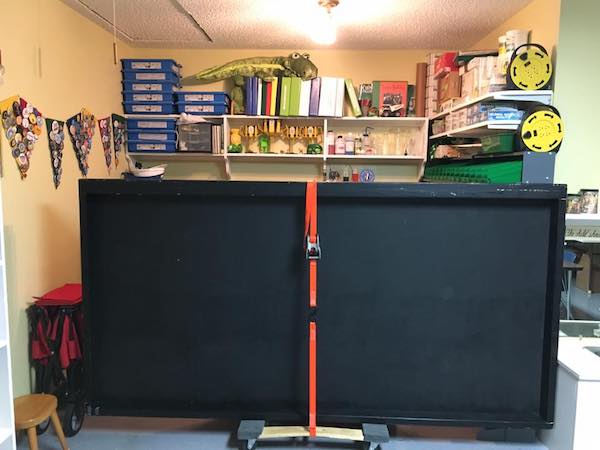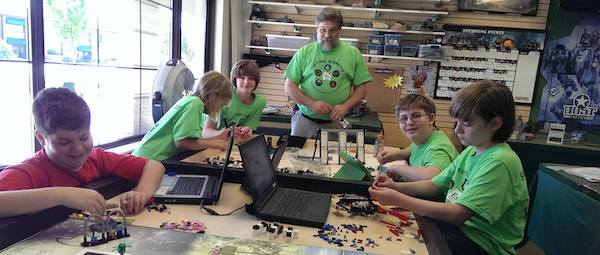Sharing Space

The following discussion is quoted from the Facebook Group FLL: Share & Learn .
Question from Simon Ward: How do teams manage the table and models between meetings? I’m guessing “leave it set up” is the best option. But what if space is limited, or it’s a shared room? We have this space (my classroom), but it’s a shared room. How practical is continually setting up/putting away models? I’m trying to weigh up time spent setting up / putting away vs. risk of other classes tampering with the set up of models, and putting the table out of action for the rest of the year.
Response from Stephanie Ozenne:
I have a permanent setup in my basement, and the primary challenge is that neighborhood kids regularly play there when I’m not present. Telling them not to touch the models didn’t help much, but laying a bed sheet over the whole table actually helped quite a bit - out of sight, out of mind, and it’s really obvious to others if someone is messing with the table. Maybe that would help?
Response from Jeff Hagan:
I really like the setup that John from FastCats rigged up: he built a false top for his game table that stands a few inches above the top of the walls. He just has to tip over the taller models, put the false top on top, and suddenly the table can be used for other things between practices. I can’t remember exactly how tall his was, but the general idea was to make it tall enough that most of the models every year wouldn’t have to be moved to put the false top on… but every year, there were generally a couple that are a bit too tall.
Response from Evonne Reynolds:
This year we get our own rooms but previously we had to set up and take down every time we met. The kids got really good at it and any of them that got there a couple minutes early would go ahead and get the models out to set it up. Taking it down at the end of the meeting wasn’t too time consuming either once they all learned where each model needed to go (we had a couple deep totes and a long shallow tote and certain models fit in each one).
Response from Mark Nicolussi:
Our room is shared - the table stays up but we have to tear down the field pieces and lock them away after every practice. After a while it becomes a pretty quick process - 10 minutes for set up, 5 minutes for tear down
Response from Jason Baber:
Setting it up and taking it down is actually a plus: the kids will be faster at spotting things that may not be reset correctly in a tournament.
Response from Jean Findley-Williams:
We have always had to share a space so we have always had to set up and take down. Our team members are quick with it and it helps them to become well aware of spotting any inconsistencies. When they go into robot design judging in our state, there are often models not set up right or pieces out of place on purpose to see if the kids will notice. Our team is always quite quick with this challenge.
Also, because of the constant storing of the mat, it does show wear after awhile and will eventually begin to have lots of nice curves and bends. The team has to program around this which puts them at an advantage when it comes to the variability we sometimes see with challenge sets at competitions. We appreciate the familiarity the constant set up and take down affords the team.
 ”
”
Response from Carrie Koepke:
We meet at a gaming store. Our table is hidden under a false top/lid that is placed directly on the walls. Every meeting the boys reassemble the table to begin and remove anything that breaches wall height at the end. It has been an extremely good way to begin/end meetings and encourage some mega-table-familiaritiy. The models travel to and from with the robot and spare parts (also good team building as they load and unload the car).
 ”
”

 Resources
Resources


